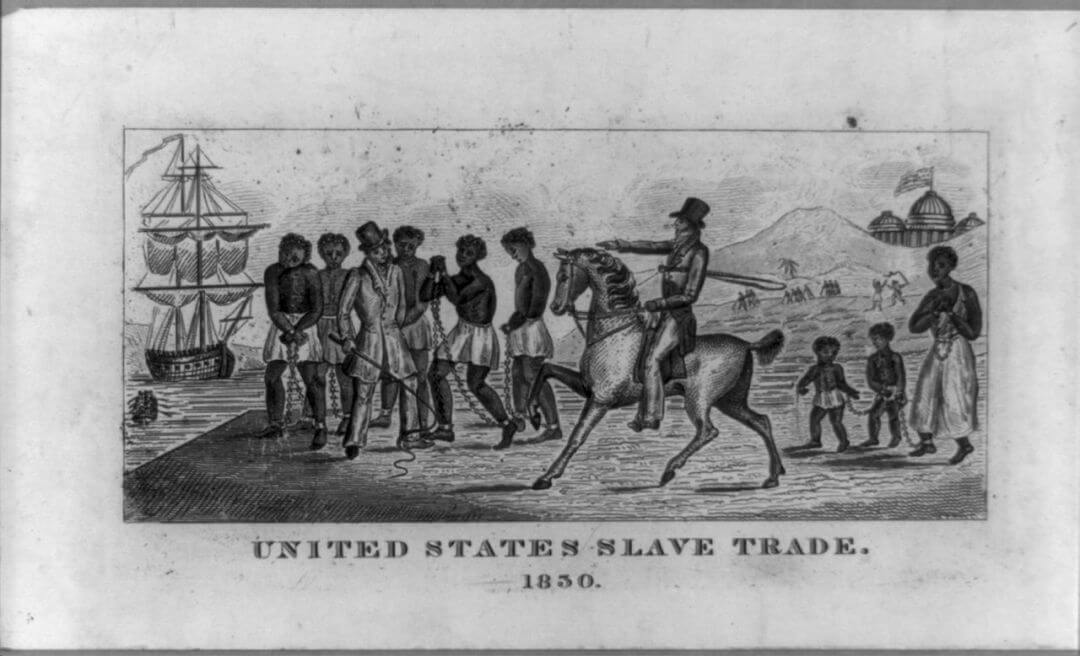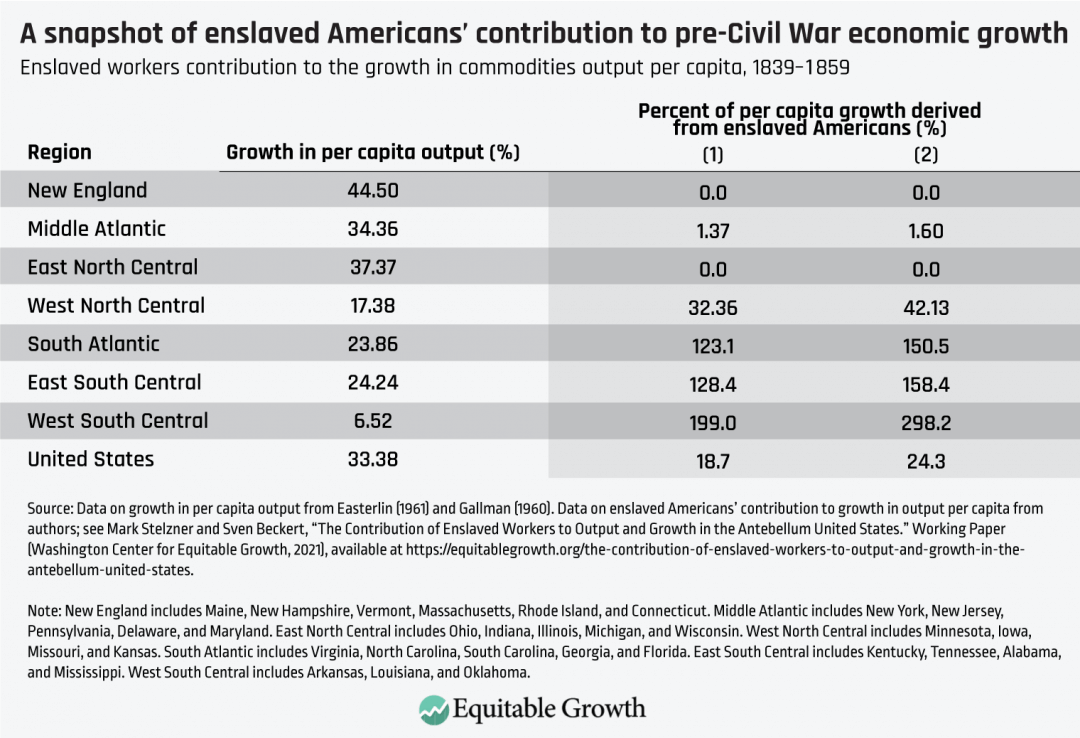New research shows slavery’s central role in U.S. economic growth leading up to the Civil War

This column is based on a working paper that is now undergoing revisions by the author, with the intention of reposting the updated version of the working paper and a new column on the topic shortly.
The economic trajectory and development of capitalism in the United States are inextricably linked to the brutal institution of slavery. A new working paper shows how central this system of violence and forced labor was to the country’s economic growth in the years leading up to the Civil War, which continues to shape racial inequities for Black Americans today.
The new working paper by economist Mark Stelzner of Connecticut College and historian Sven Beckert of Harvard University, titled “The Contribution of Enslaved Workers to Output and Growth in the Antebellum United States,” provides the first in-depth estimates of enslaved workers’ contributions to regional and national economic growth between 1839 and 1859.
Stelzner and Beckert show that the work of enslaved Americans was an important driver of growth not only in the South but also for the national economy as a whole, comparable to the growth in per capita output of manufacturing workers in New England. Their findings also show that income inequality increased between White Southern households with enslaved Americans and those without—a socially and politically destabilizing factor in the antebellum South.
The authors write that their findings demonstrate that “slavery was an important institution for economic development in the United States, and that the unrequited labor of enslaved women, men and children helped produce in significant ways the nation’s economic expansion in the two decades before the Civil War.” This research is important to understand the role of slavery in U.S. economic history and, by further quantifying the exploitation of enslaved people, can contribute to discussions of reparations and the legacy of slavery today.
Enslaved workers’ contribution to per capita growth between 1839 and 1859
The findings in Stelzner and Beckert’s working paper show that slavery was an important driver of per capita growth in commodity output in the two decades before the Civil War and was increasingly important to economic development in both Southern states and the nation as a whole. Previous estimates of the economic impact of slavery generally have been based on indirect measures of enslaved Americans’ output and appear to have underestimated the output of these enslaved workers.
In order to create more direct measures and connect these findings to national economic growth, Stelzner and Beckert used data on the valuations of enslaved Americans to determine the income generated by these enslaved workers based on age, gender, and location. The authors then used census data by state, mortality data, and other data to create estimates for output and growth over this pre-Civil War period.
The estimates based on this new approach suggest that the increase in output per enslaved worker was responsible for roughly a fifth of the growth in commodity output per capita for the United States as a whole between 1839 and 1859—between 18.7 percent and 24.3 percent. At the latter end of this time period, in 1859, enslaved Americans accounted for only 12 percent of the U.S. population. (See Figure 1.)
Figure 1

At the regional level, as shown in Figure 1, the impact was even greater, as “the increase in commodity output per enslaved worker drove per capita growth in the South Atlantic, East South Central, and West South Central,” according to the authors’ research.
Distributional effects of antebellum slavery and the start of the Civil War
The working paper’s findings also show how the economic position of nonslaveholding White Southerners was declining between 1839 and 1859. As enslaved workers’ per capita commodity output increased dramatically in slaveholding regions during this period, the per capita commodity output of free Southerners who did not own enslaved Americans was falling.
This rising inequality drove internal conflict within Southern states, the authors write, supporting the argument that the expansion of slavery into new states was an existential matter for slaveholding Southerners. Slaveholding elites worried that as “the sharpening inequality between free southerners was increasingly politically untenable,” nonslaveholding White people would begin to oppose the practice of slavery.
Conclusion
The findings in this working paper contribute to longstanding discussions among researchers as to the role of the institution of slavery in the country’s economic development. While some scholars and commentators argue that it was a minor factor in the economic trajectory of the United States, this research provides additional evidence that this brutal system of exploitation was vital to the country’s economic growth and the development of U.S. capitalism.
This research also shows that enslaved Americans were not only profitable for slaveholders but also increasingly important to the economic and political status quo in the South—and that abolition and the end of slavery’s expansion represented an existential threat to slaveholding Southerners. Despite some claims that the institution of slavery was becoming less important to the South’s economic future and might have ended “naturally” without the Civil War, Stelzner and Beckert write that “slavery remained a source of profits, wealth, political power and opportunities for growth, including productivity enhancements, all the way until the 1860s.”
This paper and other efforts to quantify the economic contributions of enslaved Americans can also be important tools for policy discussions of how to calculate reparations for their descendants today. For instance, scholars Thomas Craemer at the University of Connecticut, Hartford, Trevor Smith at New York University, Brianna Harrison at the University of Memphis, Trevon Logan at The Ohio State University, Wesley Bellamy at Virginia State University, and William Darity, Jr. at Duke University recently explored several potential methods for calculating reparations for slavery in a 2019 article in The Review of Black Political Economy, including wage-based valuations and other methods.
As economist Dania Francis at the University of Massachusetts Boston outlined in her Vision 2020 essay on the logistics of a reparations program in the United States, there are many forms reparations could take, depending on the goals of the program. Research into the impact of slavery and other legacies of racist violence and oppression are important to understanding their role in our country’s history and the harms that continue to this day.





